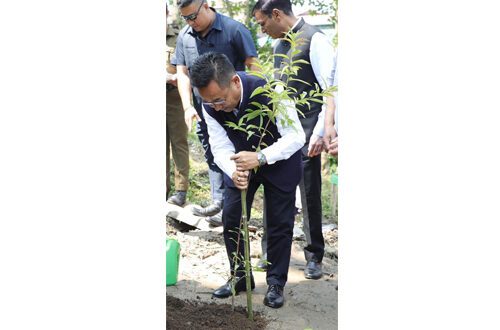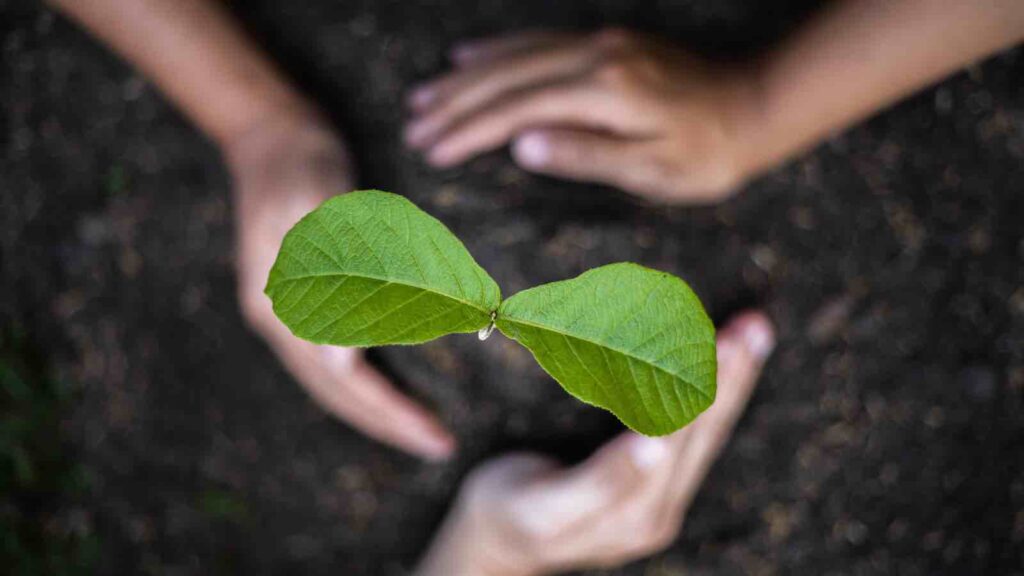Sikkim to plant 100 trees for every newborn as per ‘My Tree My Child” scheme.
In a radical move echoing the timeless connection between humans and nature, Sikkim, a jewel in the Eastern Himalayas, is rolling out a heartwarming initiative: 100 trees for every newborn. Drawing attention in environmental circuits and warming hearts globally, this is not just another tree-planting scheme; it’s a cultural renaissance and a deep dive into conservation.
RELEVANT SUSTAINABLE GOALS


Mero Rukh Mero Santati” or “My Tree My Child Scheme
Delving into the program, aptly titled “Mero Rukh Mero Santati” or “My Tree My Child”, the intimacy of this initiative is clear. As Pradeep Kumar, the powerhouse behind the State Forest Department, passionately mentions, “It’s all about a brighter tomorrow where a tree and a child, side by side, symbolize vitality, happiness, and unbreakable health.”
Brainchild of Chief Minister Prem Singh Tamang (Golay), this isn’t a mandate but a heartfelt call to parents, appealing to their inherent love for nature and the future.
The main objective of this initiative is to reinforce the age-old bond between society and nature, creating an ecosystem where both trees and children can thrive, promising vitality, health, and happiness. “Mero Rukh Mero Santati” aims to facilitate seamless services for new parents, from enrollment to planting and post-care, with various departments of the state government coming together to support the program.

While 2400 couples have already hopped onto this eco-train, the real star is the system’s underlying democracy. From choices of species and number of plants to planting locations, parents hold the reins. And the best part? Trees can stand tall on private, community, or forest lands.
With districts like Namchi and Gangtok already leading enrolment figures, the scheme’s reach is far and wide. And ensuring no child-tree pair is left behind, birth certificates are cross-referenced with the Forest Department.
It’s not just about numbers or metrics. Sushmita Chettri, a proud mother and participant, voices the deeper sentiment: “Our kids, growing alongside these trees, will embody our age-old tradition of nature reverence, becoming the frontline warriors against climate adversities.”
A shift is palpable, forests are no longer distant government assets; they’re community treasures, a shared legacy. Environmental aficionado, Kamal Kumar Tanti, hails this as “not just a program but a movement”, spotlighting the urgent need for climate action, all the while nurturing future stewards of Earth.
Sikkim is showing the world that the path to environmental salvation might just begin with a baby’s first cry and the rustle of fresh green leaves. Welcome to a future where every birth announcement might just be the planet exhaling a sigh of relief. If there’s one story that captures the intersection of hope, culture, and green action, this is it. Get ready world, Sikkim is redefining green revolutions, one baby at a time.
You may also be interested in :
Accelerating Biodiversity – Positive Impact : A Conversation With Silverstrand Capital’s Kelvin Chiu


